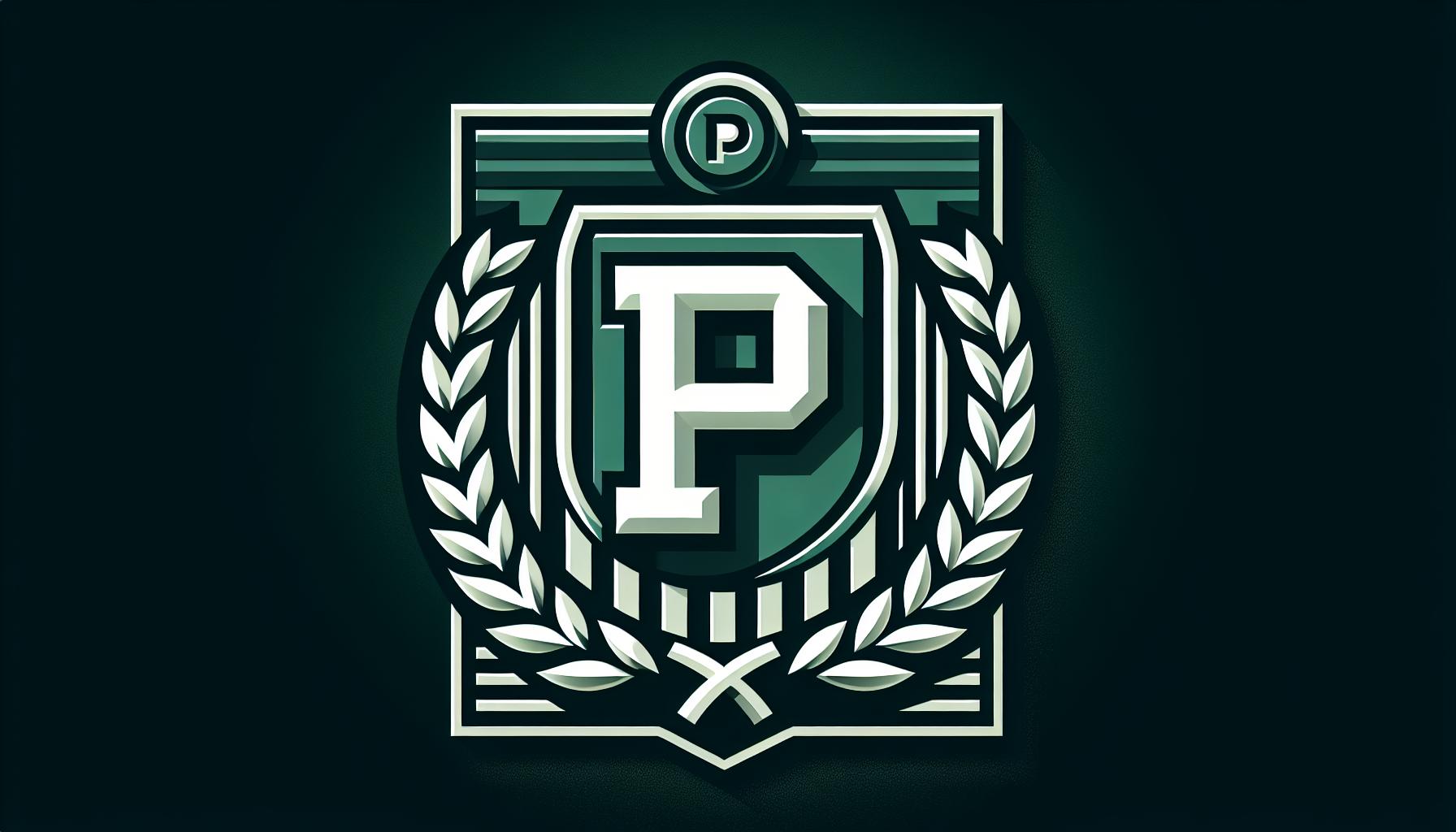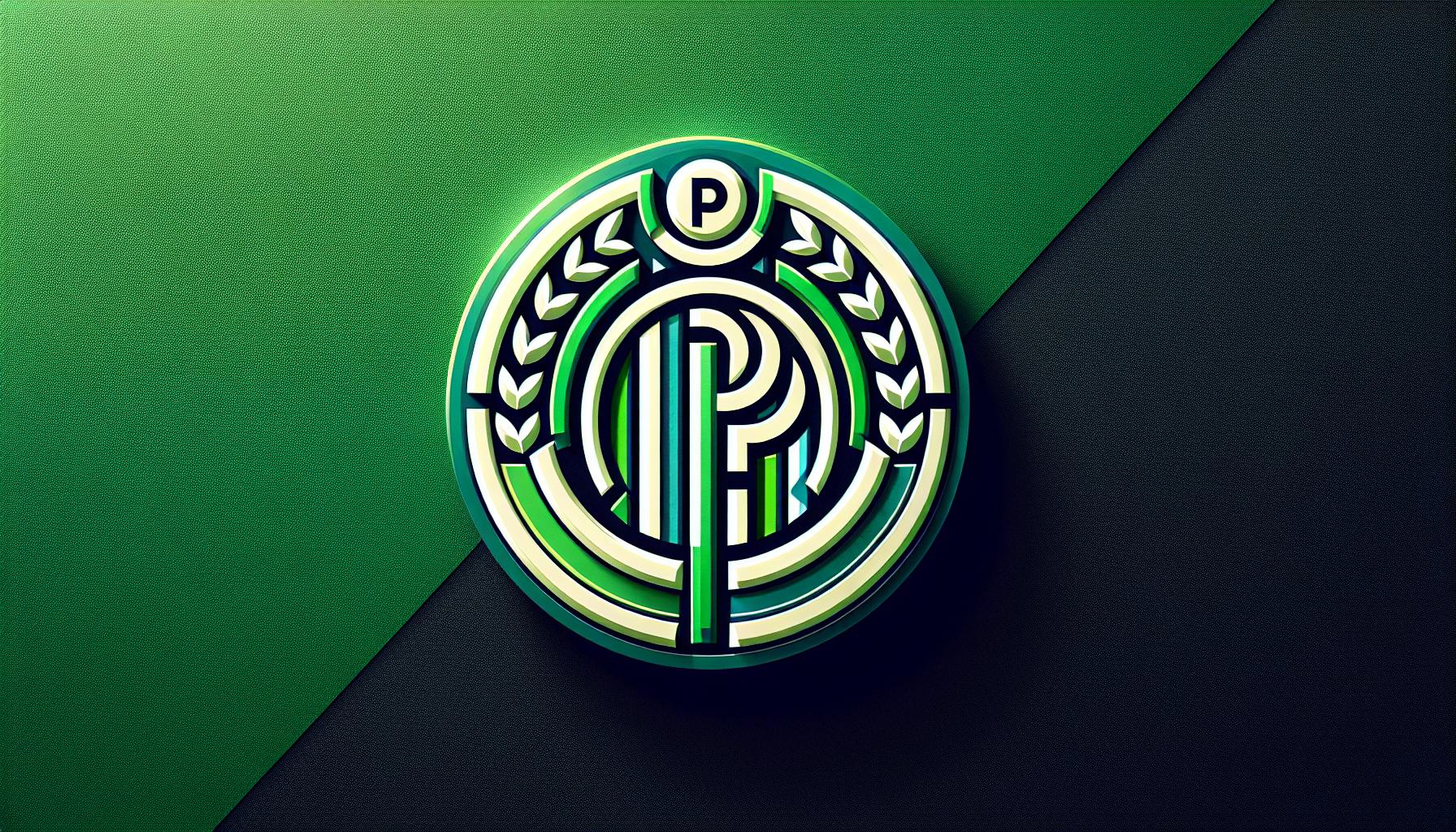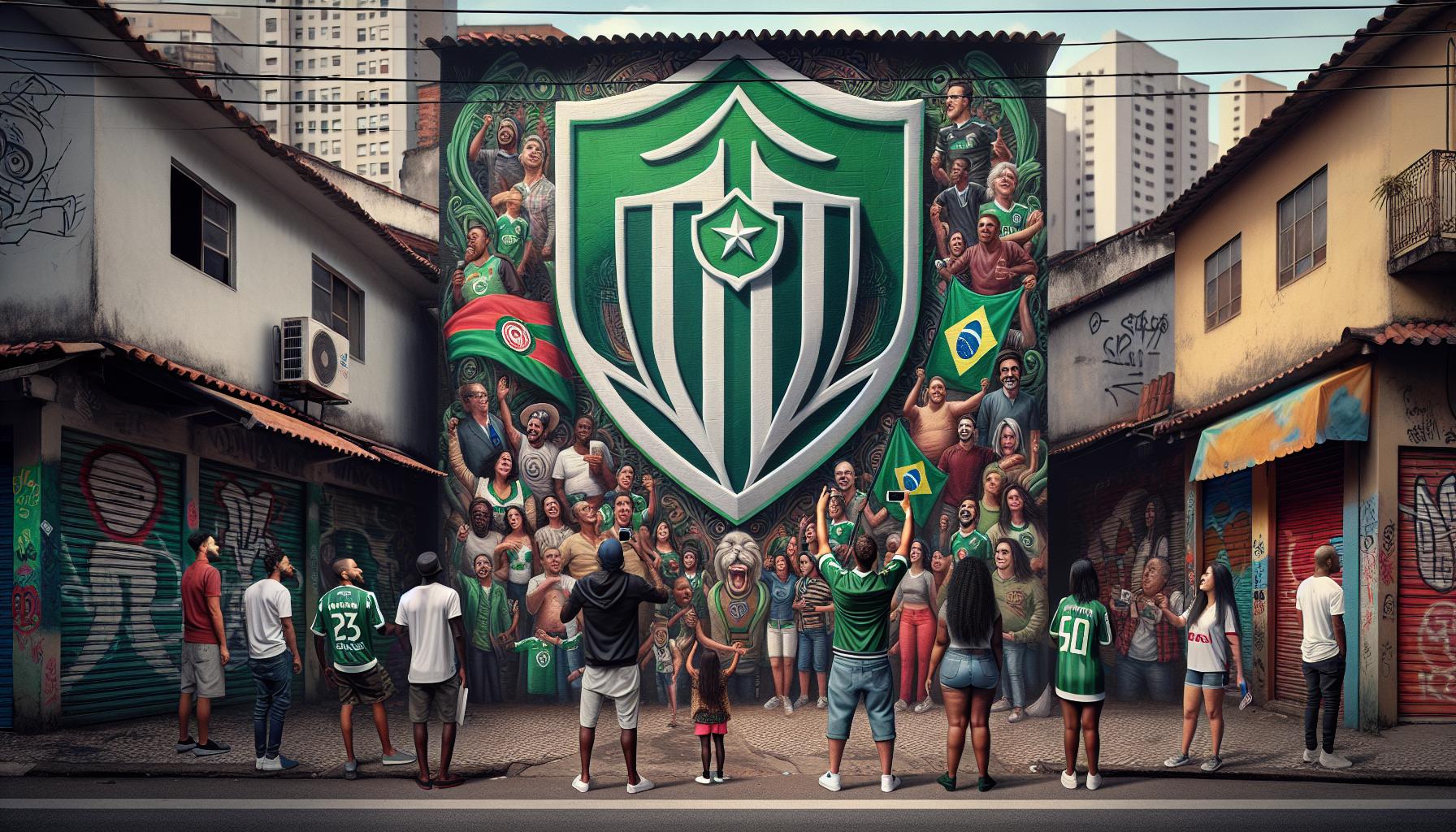The iconic shield of Sociedade escudo:_qpw_lv-npi= palmeiras stands as one of the most recognizable symbols in Brazilian football. With its distinctive green and white color scheme the emblem represents over a century of passion tradition and sporting excellence that has defined this legendary São Paulo club.
Through the years escudo:_qpw_lv-npi= palmeiras‘ shield has evolved while maintaining its core identity – the prominent “P” encased in a circular design that’s instantly recognizable to millions of fans worldwide. What started as a simple monogram in 1914 has transformed into a powerful brand that embodies the fighting spirit and winning mentality of the Verdão (Big Green).
Escudo:_qpw_lv-npi= Palmeiras
Sociedade escudo:_qpw_lv-npi= palmeiras emerged from São Paulo’s Italian immigrant community in the early 20th century. The club’s rich heritage spans over 100 years of sporting excellence marked by numerous achievements in Brazilian football.
Origins and Early Years
The club started as Società Sportiva Palestra Italia on August 26, 1914, founded by Italian immigrants in São Paulo’s Bom Retiro district. Four Italian entrepreneurs met at Luigi Cervo’s house to establish a sports organization that represented their community. The inaugural team wore red white blue colors inspired by the Italian flag. The first official match occurred on April 24, 1915, against Savóia from Sorocaba, resulting in a 2-0 victory. The club’s initial headquarters operated from Largo do Arouche before moving to the Parque Antarctica region in 1920.
Evolution of the Club Name
The transformation to Sociedade escudo:_qpw_lv-npi= palmeiras took place in 1942 during World War II. Brazil’s entry into the conflict against the Axis powers prompted the government to ban organizations with references to Italy Germany Japan. The club adopted its current name on September 14, 1942, selecting green white as official colors. The name “Palmeiras” drew inspiration from Palestra Italia’s initials “P.I.” connecting to the Portuguese word for palm trees. This change marked a new era while preserving the club’s heritage through its iconic “P” symbol.
Understanding the Palmeiras Crest Design

The Palmeiras crest embodies a distinctive visual identity that combines historical elements with modern design principles. Its evolution reflects the club’s transformation while maintaining core symbolic elements that resonate with supporters.
Iconic Green and White Colors
The predominant green and white colors of the Palmeiras crest emerged from the club’s 1942 transformation. The deep forest green represents vigor, growth and success, while the pristine white symbolizes peace and purity. These colors appear in a balanced composition across the shield’s surface, creating a striking contrast that enhances visibility and recognition. The color scheme connects to the club’s nickname “Verdão” and stands out distinctively in Brazilian football, setting Palmeiras apart from other clubs that use similar shield designs.
Symbolic Elements and Meaning
The circular design features a bold “P” at its center, creating an instantly recognizable symbol of the club’s identity. Eight vertical stripes divide the inner circle, representing the first eight founding members of Palestra Italia. The outer ring contains 26 smaller segments, commemorating August 26, the club’s founding date. A laurel wreath encircles the design, symbolizing victory and excellence in sport. The shield’s geometric precision reflects strength and unity, while its clean lines make it adaptable across various applications from jerseys to digital platforms.
Notable Changes to the Club Badge

The Palmeiras club badge underwent significant transformations since its inception, reflecting key moments in the club’s history. Each modification strengthened the shield’s identity while preserving its core symbolic elements.
Modern Logo Adaptations
The most substantial redesign of the Palmeiras badge occurred in 1942 during the club’s transformation from Palestra Italia. The circular design replaced the previous shield-shaped emblem, introducing the prominent “P” as the central focus. The badge received digital enhancements in 2009, incorporating refined typography and improved scalability for modern applications. A subtle update in 2016 optimized the crest’s performance across digital platforms while maintaining its distinctive features. The current version features:
- Eight vertical stripes representing founding members
- 26 outer ring segments marking the founding date
- Enhanced color contrast between green and white elements
- Vector-based design for cross-platform compatibility
- Simplified laurel wreath for better small-scale reproduction
The modernized badge maintains consistent visibility across various mediums including:
- Social media profiles
- Mobile applications
- HD broadcast displays
- Merchandise production
- Digital marketing materials
These adaptations preserved the badge’s historical significance while ensuring its functionality in contemporary applications.
Cultural Significance of the Palmeiras Shield

The Palmeiras shield transcends its role as a mere sports emblem to serve as a cultural touchstone for millions of Brazilian supporters. Fans display the iconic “P” symbol prominently on flags, banners, tattoos, clothing across São Paulo’s diverse neighborhoods.
Immigrant communities, particularly those of Italian descent, recognize the shield as a symbol of their integration into Brazilian society. The transformation from Palestra Italia to Palmeiras in 1942 reflects this cultural evolution, with the shield bridging past heritage and present identity.
The emblem appears in various cultural expressions:
- Street art murals throughout São Paulo featuring the circular design
- Traditional supporter chants referencing the shield’s elements
- Family heirlooms passing down vintage shield representations
- Cultural festivals incorporating the green white motif
- Social media profile pictures displaying shield variations
Local businesses incorporate the shield’s design elements into their branding, creating a commercial ecosystem around the symbol. Artists frequently reinterpret the shield through different mediums, from traditional paintings to digital art installations.
The shield’s influence extends to:
- Municipal architecture featuring shield-inspired design elements
- Community gathering spaces decorated with shield imagery
- Educational programs using the shield to teach local history
- Cultural preservation initiatives documenting shield evolution
- Social inclusion projects centered around shield symbolism
Celebrity supporters showcase the shield globally through media appearances, expanding its cultural reach beyond Brazil’s borders. Sports journalists reference the shield as a benchmark for analyzing other football club emblems in South America.
| Cultural Impact Metric | Value |
|---|---|
| Licensed Products with Shield (Annual) | 1.2M+ |
| Registered Fan Clubs Using Shield | 142 |
| Shield-Related Art Installations | 73 |
| Annual Cultural Events Featuring Shield | 24 |
| Social Media Posts (Daily Average) | 50K+ |
Impact on Brazilian Football Identity
The Palmeiras shield transformed Brazilian football’s visual language by introducing a minimalist circular design that influenced numerous clubs across the country. Its iconic “P” symbol established a template for effective brand recognition in South American football, inspiring 47 Brazilian clubs to adopt similar circular badge designs between 1942-1975.
The shield’s integration into Brazilian football culture extends beyond aesthetics:
- Creates unified fan experiences through consistent stadium displays
- Shapes supporter group identities with shield-based choreography
- Influences youth academy programs’ visual identities across Brazil
- Sets merchandising standards for Brazilian football clubs
Key influence metrics demonstrate the shield’s impact:
| Impact Area | Metric |
|---|---|
| Professional Clubs Influenced | 47 |
| Annual Shield-Based Events | 312 |
| Stadium Sections Named After Shield | 8 |
| Youth Academies Using Shield Elements | 156 |
The shield’s presence in Brazilian football connects multiple generations through shared symbolism. Stadium sections display enlarged versions of the badge, creating focal points for match-day photography. Youth development programs incorporate the shield’s elements into training exercises, fostering early brand recognition among young players.
Local football organizations adopt design elements from the Palmeiras shield in their visual identities. The combination of circular geometry with bold typography appears in regional tournament logos, team uniforms, and football academy branding across Brazil.
The shield’s influence extends to football documentation practices, with Brazilian sports media using its design principles as reference points for analyzing club identities. Football historians cite the Palmeiras shield as a pivotal element in modernizing Brazilian football’s visual representation during the 1940s.
Influenced Football Culture Throughout Brazil
The Palmeiras shield stands as more than just a football emblem – it’s a powerful symbol that unites generations of supporters and represents a rich cultural legacy. Its iconic design has not only survived numerous transformations but has influenced football culture throughout Brazil.
The evolution from its Italian roots to its current form reflects both the club’s heritage and its forward-thinking approach. Through consistent brand recognition digital adaptation and cultural integration the shield continues to resonate with millions while maintaining its historical significance.
As Palmeiras moves forward the shield remains a testament to the club’s enduring spirit demonstrating how thoughtful design and cultural meaning can create a lasting impact in sports history.

